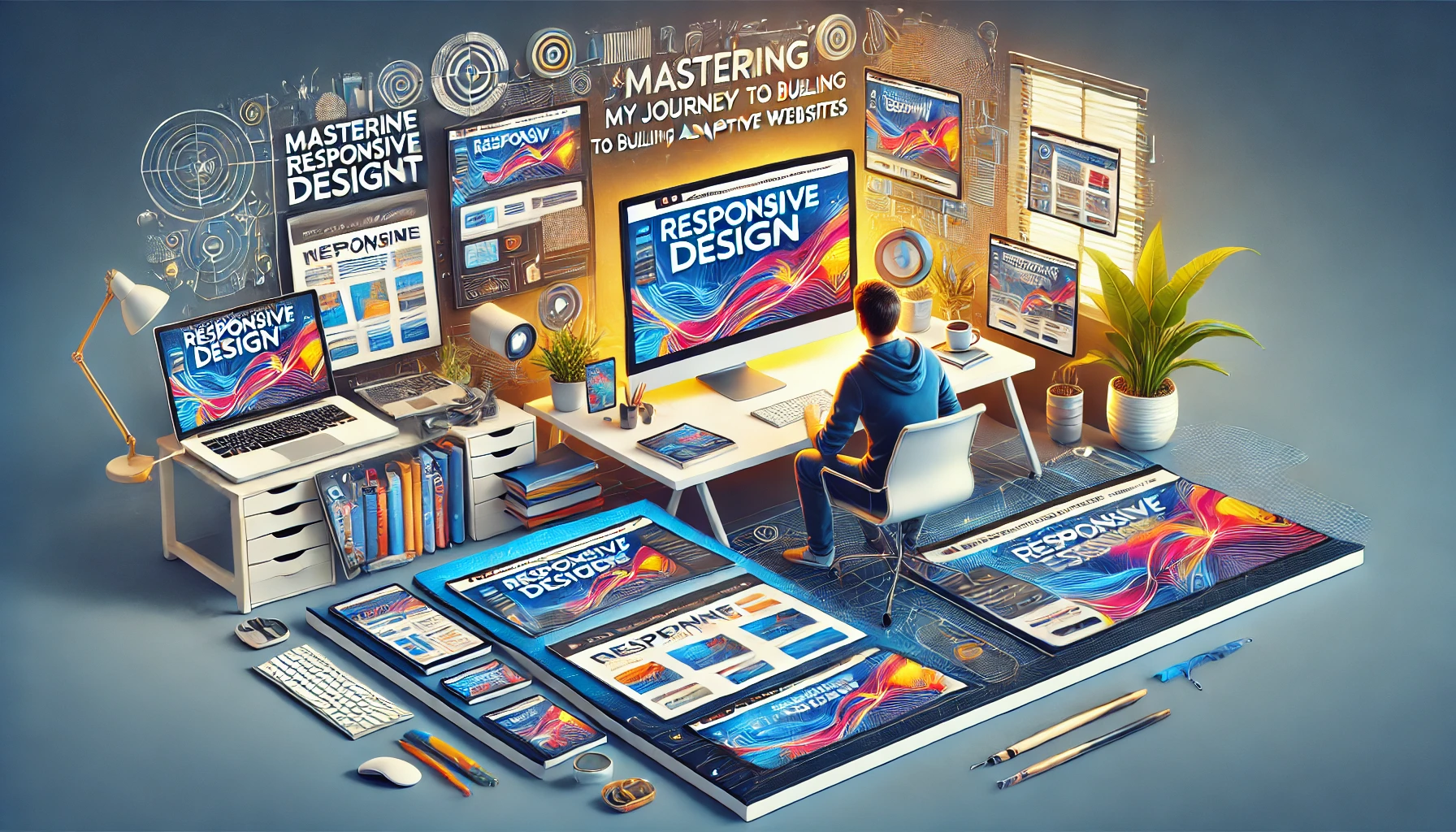Mastering Responsive Design: My Journey to Building Adaptive Websites
 Saurabh Gupta
Saurabh GuptaTable of contents
- 1. Initial Learning and Challenges
- 2. The Breakthrough: Understanding Breakpoints
- 3. Learning Media Queries and Their Usage
- 4. Resources and Tools That Boosted My Learning
- 5. Frameworks and Their Take on Responsiveness
- 6. The Process of Building Responsiveness from Scratch
- 7. Practical Experience: From Frameworks to Core Concepts
- 8. Major Lessons Learned
- 9. The Result: Mastery and Enhanced Skills
- Final Thoughts

As a frontend developer, I started with the basics of responsive design but felt I hadn't truly mastered it. I worked with CSS frameworks like Tailwind CSS and Bootstrap, which simplified responsiveness but masked the underlying principles. I realized that to level up, I needed to understand the core concepts of CSS and media queries. This article outlines my learning process and provides valuable insights for anyone looking to deepen their understanding of responsive design.
1. Initial Learning and Challenges
When I first delved into frontend development, I learned some basic responsive design techniques. However, these were often surface-level applications. Over time, I noticed gaps in my knowledge, especially when working without the convenience of CSS frameworks. This realization motivated me to revisit core CSS and understand how to create responsive websites from scratch.
Challenge: Managing breakpoints without relying on frameworks was initially confusing. The variety of screen sizes and how to effectively target them posed a significant challenge.
2. The Breakthrough: Understanding Breakpoints
A key part of responsive design is understanding breakpoints—the screen widths at which the layout changes to enhance user experience. Here’s a table summarizing standard breakpoints I use:
| Breakpoint Name | Width Range (px) | Device Type |
| Extra Small (xs) | Up to 576px | Mobile devices |
| Small (sm) | 576px - 767px | Larger mobile devices |
| Medium (md) | 768px - 991px | Tablets |
| Large (lg) | 992px - 1199px | Laptops, small desktops |
| Extra Large (xl) | 1200px - 1399px | Desktops |
| XX-Large (xxl) | 1400px and above | Large desktops, widescreens |
3. Learning Media Queries and Their Usage
Media queries allow you to apply CSS styles based on the screen size or other properties. Here's an example of a basic media query:
/* Base styles for mobile */
.container {
padding: 10px;
}
/* Adjust padding for larger screens */
@media (min-width: 768px) {
.container {
padding: 20px;
}
}
Breakthrough Tip: Analyze how popular CSS frameworks handle breakpoints by inspecting their source code. This helped me understand the logic behind their responsive classes and implement similar practices in my projects.
4. Resources and Tools That Boosted My Learning
In my journey, leveraging reliable resources was crucial. Here are some top resources and articles that can help you:
AI Tools: ChatGPT was incredibly helpful for quick answers and code suggestions. Useful prompts include “Explain how to use media queries effectively” or “Show a responsive layout example using core CSS”.
Articles and Tutorials:
5. Frameworks and Their Take on Responsiveness
While frameworks like Tailwind CSS handle responsiveness with utilities like sm:grid or lg:px-4, understanding how to write custom media queries provided me with greater flexibility and control.
Example from Tailwind:
<div class="container sm:grid lg:px-4">
<!-- Content -->
</div>
6. The Process of Building Responsiveness from Scratch
Here’s how I approach designing responsive layouts:
Start with a Mobile-First Approach: Begin with styles optimized for smaller screens and progressively add styles for larger screens.
.menu { display: block; } @media (min-width: 768px) { .menu { display: flex; } }Use Fluid Layouts: Replace fixed-width values with percentage-based or
em,rem,vw, andvhunits to create adaptable layouts.Responsive Media: Apply
max-width: 100%to ensure images and videos resize within their containers.img, video { max-width: 100%; height: auto; }Flexbox and Grid Layouts: Implement Flexbox for simple, adaptable structures and CSS Grid for more complex, responsive designs.
.container { display: grid; grid-template-columns: 1fr; } @media (min-width: 992px) { .container { grid-template-columns: 1fr 1fr; } }
7. Practical Experience: From Frameworks to Core Concepts
After working on multiple projects using frameworks, I shifted to projects built with core CSS to challenge myself. This hands-on experience clarified the relationship between breakpoints and layout adjustments, leading to more intuitive and flexible design processes.
8. Major Lessons Learned
Plan for Responsiveness Early: Always keep responsiveness in mind during the design phase to avoid complex restructuring later.
Prioritize a Mobile-First Strategy: Ensures better performance on mobile devices by loading minimal styles and adding complexity as the screen size increases.
Understand Frameworks, Master Core Concepts: Frameworks are helpful, but true mastery comes from understanding how and why the underlying code works.
9. The Result: Mastery and Enhanced Skills
Learning and applying core CSS media queries have not only cleared my concepts of responsive design but have significantly improved my workflow. I now approach projects with a deeper understanding of adaptability, making me a more proficient and versatile developer.
Final Thoughts
Mastering responsive design using core CSS is an essential step for any frontend developer who wants to build websites that provide a seamless user experience across all devices. By learning and practicing these core techniques, you’ll not only enhance your projects but also strengthen your overall development skills.
Additional Learning Resources:
Subscribe to my newsletter
Read articles from Saurabh Gupta directly inside your inbox. Subscribe to the newsletter, and don't miss out.
Written by
Saurabh Gupta
Saurabh Gupta
I am Saurabh Gupta, a dedicated frontend developer with over 2.5 years of experience. My expertise lies in building user-friendly and responsive web applications using technologies like React and Next.js. I have a strong background in integrating APIs and working with modern JavaScript libraries. I am passionate about creating efficient, scalable, and aesthetically pleasing web solutions, and I continuously seek to refine my skills to deliver impactful user experiences.